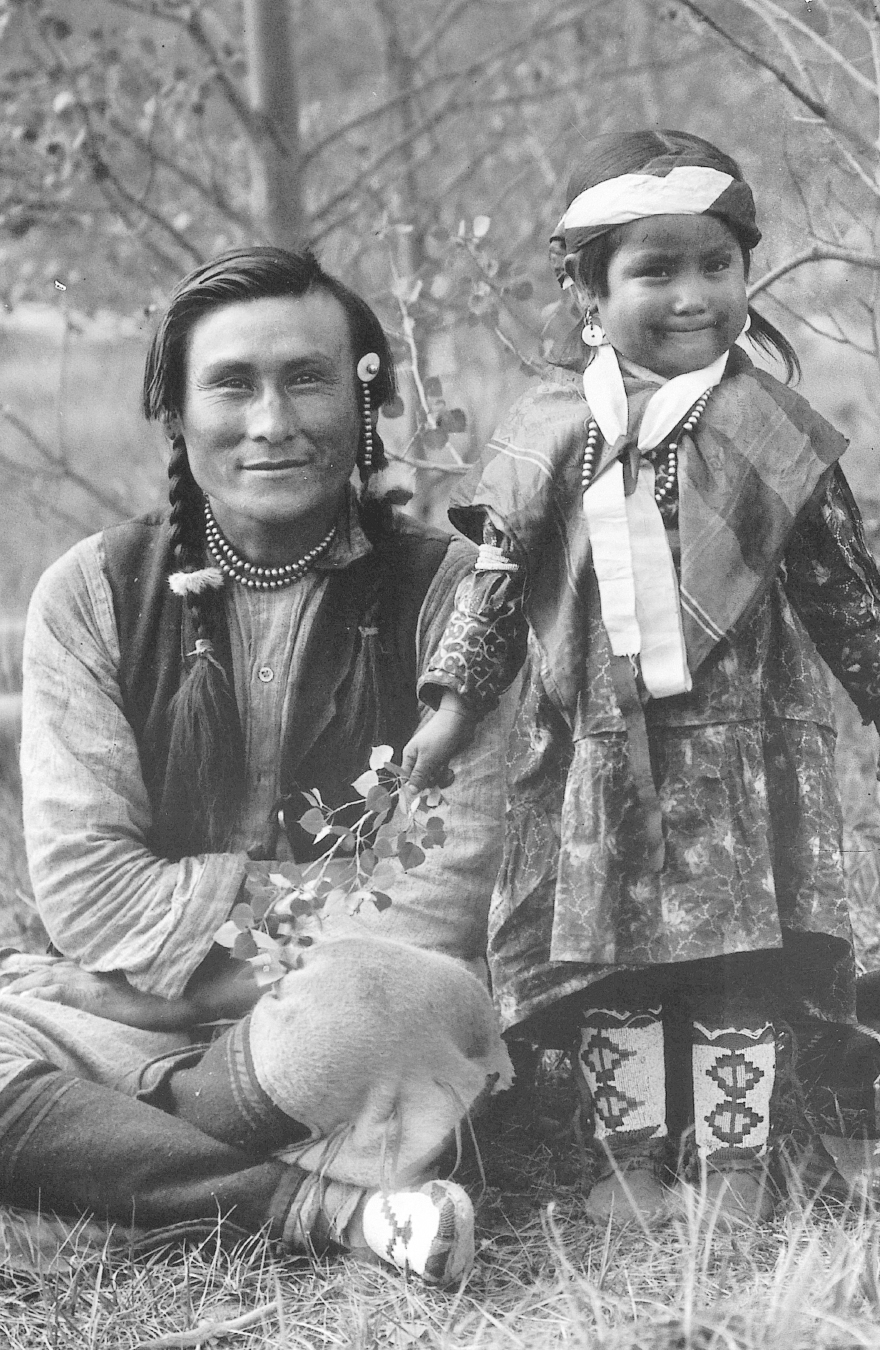Communicating Nonverbally
8
}
Communicating Nonverbally

Nonverbal communication powerfully shapes others’ perceptions of you.
The Beaver Family, 1907. Whyte Museum of the Canadian Rockies, #V527, by Mary Schaffer, Photographer.
Look for LearningCurve throughout the chapter to help you review.
Closely examine this photograph. As you do, try to recall other images of Native Americans from the late 1800s or early 1900s that you’ve seen. What is different, unique, or interesting about this photo? How does the picture make you feel? What’s your impression of the people in it?
I first came upon this image in poster form in my son’s preschool classroom, and I was stunned. Intuitively, I found the picture perplexing and provocative, but I couldn’t put my finger on precisely why. Seeing me staring at it, the teacher approached me. “Pretty neat, isn’t it?” she said. “Yes,” I said, “but something about it strikes me as unusual. Do you know what it is?” “Of course,” she replied. “They’re smiling.”
By the late 1800s, stereotypical images of Native Americans were being sold as tourist postcards and magazine illustrations (Silversides, 1994). These images depicted Native peoples in full ceremonial dress, astride their horses or posed in front of teepees, scowling fearsomely.
As Cambridge University professor Maria Tippett (1994) notes, “The image one gets throughout this seventy year period is of a blank-faced, stiff, and unengaged people” (p. 2). When I surveyed more than 5,000 photos from this era, I found not a single image portraying Native Americans with smiles—except for this family photo.1
In contrast, this rare portrait, taken by amateur photographer Mary Schaffer (1861–1939), shows people who, rather than staring blankly into the camera, “communicate with the eyes behind it” (Tippett, 1994). The image has an intriguing history. Schaffer, with her friend Mollie Adams and two guides, were exploring the headwaters of the Saskatchewan and Athabasca Rivers in Canada in late 1907, where they met a band of Stoney Indians who befriended them. Among them were Samson Beaver, his wife Leah, and their young daughter Frances, who invited Mary to dinner. After the meal, Mary asked them if she could take their picture, and they agreed.
The Beaver family photo provides a literal and metaphorical snapshot of an interpersonal encounter: the postures, faces, dress, and use of space during a family meeting with a new friend late one sunny afternoon. You can almost feel the fellowship that must have infused the conversation, communicated through Samson’s smile, his forward lean, and his direct gaze—all cues conveying intimacy and closeness. If you feel an immediate connection and empathy with Samson, you’re not alone. This is a typical human reaction to the sight of a smiling person. A scowling face has quite the opposite effect.
The Beaver family photo reminds us of the universal and transcendent nature of human nonverbal expression and of its powerful role in shaping our impressions of others. A hundred years ago, a family joined new friends to share a meal and something of themselves with one another. Although they’re all long since dead, the image of their encounter serves as an enduring reminder of the power of human nonverbal expression to shape our interpersonal communication and relationships.
1Author review of 5,000 photos in the Curtis Archives, http://curtis.library.northwestern.edu/curtis/toc.cgi.
Learning to manage your nonverbal communication is both important and challenging. It’s important because most of the meaning we exchange during interpersonal encounters comes from our nonverbal expressions (Burgoon & Hoobler, 2002). What’s more, nonverbal skill is associated with a host of positive outcomes, from high self-esteem to relationship satisfaction (Hodgins & Belch, 2000). It’s challenging because nonverbal communication involves many different aspects of behavior, all of which must be considered and controlled simultaneously. When you communicate nonverbally, you manipulate your bodily movements, your voice, and the way you touch others. You also decide how to occupy space, craft your appearance, and use time. To do so competently requires knowledge of the various means of nonverbal communication, the ability to shape and adapt nonverbal expression, and the motivation to do so.
In this chapter, we discuss nonverbal communication and offer guidelines for strengthening your skills. You’ll learn:
- How nonverbal communication differs from verbal communication
- How culture and gender affect our nonverbal communication
- What the eight codes of nonverbal communication are, and how you can more skillfully use them when interacting with others
- What purposes nonverbal communication serves in our everyday lives